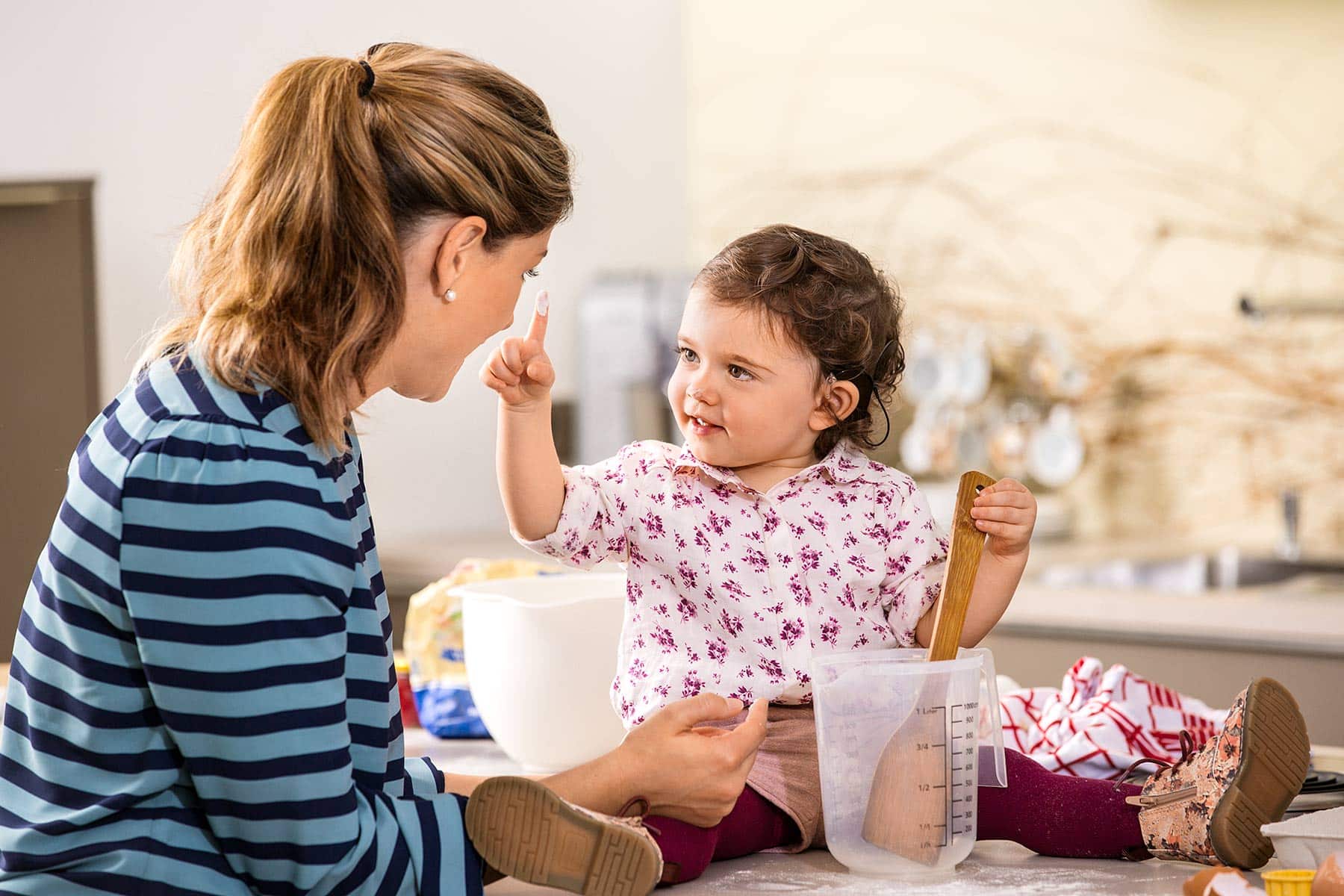
MED-EL
Published Jul 03, 2015 | Jun 05, 2024
6 Listening Games to Play with Your Baby
If your baby has just received a cochlear implant, now’s the time to help them dive into the world of sound. One of the best ways to promote spoken communication skills is by building a solid foundation of sound awareness, listening, and auditory skills for language and speech skills. So we’ve put together six listening games and activities you can play with your baby to build these auditory skills.

1. Making Instruments at Home
Make your own simple instruments at home to draw your child’s attention to sound. One of the first auditory skills your child will develop is the ability to detect sounds, music, and speech around them. Draw your child’s attention to sounds in their environment by pointing to the sound and then to your ear. Tell them “I heard it! I heard the…” Repeat the sound, if possible, so your child can hear it again.
Make a tambourine-type instrument by taping two paper plates together and filling them with dried pasta. Shake the tambourine back and forth with your child. You can draw their attention to the sound using your facial expressions, by pointing to your ear, or by telling them you hear the sound. Stop shaking the tambourine to contrast the sound with silence. Then repeat.
Here are some other instruments you could make:
- Shaker: a bottle filled with rice
- Drum: a pan or empty tin, hit with a wooden spoon
2. Animal and Vehicle Play Sounds
Add fun and interesting sounds to the animal and vehicle toys your child plays with. Play sounds are more interesting for young children and are easier to imitate than words. Some examples of play sounds include:
- “Brmm-brmm” for cars
- “Choo-choo” for trains
- “Whoosh” for planes
- “Beep-beep” for buses
- “Moo” for cows
- “Woof woof” for dogs
- “Tweet tweet” for birds
- “Tick-tock” for clocks
- “Ring-ring” for phones
3. Songs and Rhymes
Sing simple children’s songs or make up repetitive songs about animals or pictures you and your baby are looking at or the routines you are doing. Add movement by clapping your hands, stomping your feet, swaying while holding your baby, or dancing to the song.
Help your baby build an awareness of sound by starting to move with your baby when the music starts and stopping when the music stops.
Play with action rhymes such as “Ring Around the Rosie” where you can move around with your child and then stop when the rhyme stops.
Here are some common rhymes:
- The Itsy Bitsy Spider
- Twinkle, Twinkle Little Star
- Old MacDonald
- The Wheels on the Bus
4. Games With Your Voice
During your day, talk with your baby to catch their attention, build anticipation, and draw attention to interesting sounds and words.
- Help your baby recognize sounds by saying “Ready!” or “Listen!” before making a sound. You can emphasize this further by either pointing to the object or cupping your hand behind your ear in a listening position.
- Build anticipation by saying phrases like “1…2…3!” or “Ready…steady…go!” before beginning an activity or moving somewhere.
5. Read Books Aloud
Reading books aloud with your baby helps your baby connect sounds to the words or pictures on a page.
For very young babies, start with colorful board books or fabric books. They don’t even need to have words, just talk with your baby about what you see on the page.
Use a singsong voice when you are reading with your baby to help make reading more enjoyable and keep their listening attention.
6. Discover Environmental Sounds
There are lots of sounds to be found around your house, so go looking for them! You can take a listening walk in your house, in your backyard, or around your neighborhood.
- Walk around your house with your child and look for appliances that make sounds, like the microwave, vacuum cleaner, washing machine, or a flushing toilet.
- When you’re near an object that makes noise, stop and say “listen!” to prepare your child for the sound.
- Then turn the object on so it makes a noise.
- Show your child that you are listening by pointing to your ear, and then smile and nod. You can also say “I hear that!” and use your voice to copy the sound.
- Once you’ve had some fun with this sound, go on to the next one.
With the help of these activities, it will be easy for you to integrate learning into your child’s everyday play. They’ll have fun—and you will too!
References

MED-EL
Was this article helpful?
Thanks for your feedback.
Sign up for newsletter below for more.
Thanks for your feedback.
Please leave your message below.
Thanks for your message. We will reply as soon as possible.
Send us a message
Field is required
John Doe
Field is required
name@mail.com
Field is required
What do you think?
© MED-EL Medical Electronics. All rights reserved. The content on this website is for general informational purposes only and should not be taken as medical advice. Contact your doctor or hearing specialist to learn what type of hearing solution suits your specific needs. Not all products, features, or indications are approved in all countries.

MED-EL

MED-EL


